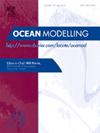A deep learning approach for coastal downscaling: The northern Adriatic Sea case-study
IF 2.9
3区 地球科学
Q2 METEOROLOGY & ATMOSPHERIC SCIENCES
引用次数: 0
Abstract
Current regional-scale oceanographic operational systems may lack the resolution needed for coastal applications, where fine-scale dynamics such as river outflow and local processes are poorly represented. Artificial intelligence based techniques for interpolation and fine-scale reconstruction can be applied for studying coastal dynamics. In this paper, we propose a deep learning method based on a UNet-like architecture for coastal downscaling of marine ecosystem modeling products. Our method is applied to the northern Adriatic Sea, a marginal region of the Mediterranean characterized by strong spatial and temporal variability, where river inputs significantly influence the physical and biogeochemical state and dynamics, especially near the coast. To address these challenges, we trained a neural network on a reanalysis dataset, covering the period from 2006 to 2017, with a horizontal resolution of about 750 m, using as input the regional-scale products of the Marine Copernicus Service for the Mediterranean Sea. We demonstrate that our architecture is capable of recovering fine-scale features that are not captured by low-resolution modeling systems. Although this paper focuses on the northern Adriatic Sea, the robustness of the method, as demonstrated by the validation metrics, suggests that it can be effectively applied to other study areas.
沿海缩减规模的深度学习方法:北亚得里亚海案例研究
目前的区域尺度海洋学业务系统可能缺乏沿海应用所需的分辨率,在沿海应用中,精细尺度的动态,如河流流出和当地过程的代表性很差。基于人工智能的插值和精细尺度重建技术可以应用于海岸动力学研究。在本文中,我们提出了一种基于类似unet架构的深度学习方法,用于海洋生态系统建模产品的沿海降尺度。我们的方法应用于亚得里亚海北部,这是地中海的一个边缘区域,具有强烈的时空变异性,河流输入显著影响物理和生物地球化学状态和动态,特别是在海岸附近。为了应对这些挑战,我们在2006年至2017年的再分析数据集上训练了一个神经网络,水平分辨率约为750米,使用地中海海洋哥白尼服务的区域尺度产品作为输入。我们证明了我们的架构能够恢复低分辨率建模系统无法捕获的精细尺度特征。虽然本文的研究重点是亚得里亚海北部,但验证指标表明,该方法的稳健性表明,它可以有效地应用于其他研究区域。
本文章由计算机程序翻译,如有差异,请以英文原文为准。
求助全文
约1分钟内获得全文
求助全文
来源期刊

Ocean Modelling
地学-海洋学
CiteScore
5.50
自引率
9.40%
发文量
86
审稿时长
19.6 weeks
期刊介绍:
The main objective of Ocean Modelling is to provide rapid communication between those interested in ocean modelling, whether through direct observation, or through analytical, numerical or laboratory models, and including interactions between physical and biogeochemical or biological phenomena. Because of the intimate links between ocean and atmosphere, involvement of scientists interested in influences of either medium on the other is welcome. The journal has a wide scope and includes ocean-atmosphere interaction in various forms as well as pure ocean results. In addition to primary peer-reviewed papers, the journal provides review papers, preliminary communications, and discussions.
 求助内容:
求助内容: 应助结果提醒方式:
应助结果提醒方式:


